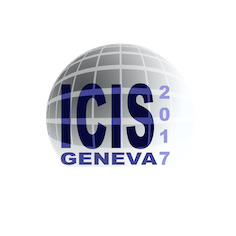Speaker
Description
The set-up of the CERN-MEDICIS facility for production of novel radioisotopes for biomedical applications is in the process of completion. The Radiochemical Laboratory for the extraction of samples of medical radionuclides and the dedicated Mass Separator Bunker have been built, the radiation protection is prepared, and the associated infrastructure is reaching an advanced stage [1]. For the first launch of the mass separation process, scheduled for the second half of 2017, a conventional ISOLDE surface ion source is going to be used to demonstrate the general operational capability of the facility.
To provide a high purity ion beam for extraction of radionuclides in accordance with medical standards, a resonance ionization laser ion source based on the ISOLDE/RILIS type [2] will be implemented during a first facility upgrade in 2018. The RILIS technology will ensure a reduced contamination of the ion beam with any undesirable isobars, and will further help to optimize operation conditions of the ion source unit itself for each chemical element. This system will assist in the goal of rapidly achieving radiopharmaceutical-standard sample purity.
The MEDICIS Laser Laboratory MELISSA is presently being designed. Using the well-established technology of the CERN-ISOLDE RILIS Lab and with support from the LARISSA workgroup of the Mainz University, the dedicated laser laboratory room, suitable for the installation and reliable operation of the laser system, is being prepared. In addition, a laser beam transfer line and a launch system into the CERN MEDICIS bunker are under development. It is planned to install a solid-state laser system based upon the standard Mainz University Titanium:sapphire laser design, as e.g. presently in use at the ISOLDE RILIS. Comprehensively automated operation, active stabilization, and therefore unsupervised operation is envisaged [3].
The multi-step laser ionization schemes for efficient and pure production of various innovative medical radionuclides are being identified and characterized at the RISIKO mass separator and laser ion source test facility in the Mainz University [4]. Primarily, the CERN-MEDICIS project is to be applied for specific radioisotopes in the lanthanide range. The status and outlook of all these activities will be discussed in the presentation.
Acknowledgement
This research project has been supported by a Marie Skłodowska-Curie Innovative Training Network Fellowship of the European Commission's Horizon 2020 Programme under contract number 642889 MEDICIS-PROMED.
References:
[1] Dos Santos Augusto R. M. et. al.: CERN-MEDICIS: A New Facility, Appl. Sci., 4 (2014). – pp. 265-281.
[2] Fedosseev V. et. al.: Ion beam production and study of radioactive isotopes with the laser ion source at ISOLDE. Journal of Physics G: Nuclear and Particle Physics, 44 (2017). - pp. 084006.
[3] Rothe S. et. al.: Laser ion beam production at CERN-ISOLDE: New features–More possibilities. Nuclear Instruments and Methods in Physics Research Section B: Beam Interactions with Materials and Atoms, 376 (2016). – pp. 91-96.
[4] Gadelshin V. et. al.: Laser resonance ionization spectroscopy on lutetium for the MEDICIS project. Hyperfine Interactions, 238, 1 (2017). – pp. 28.
